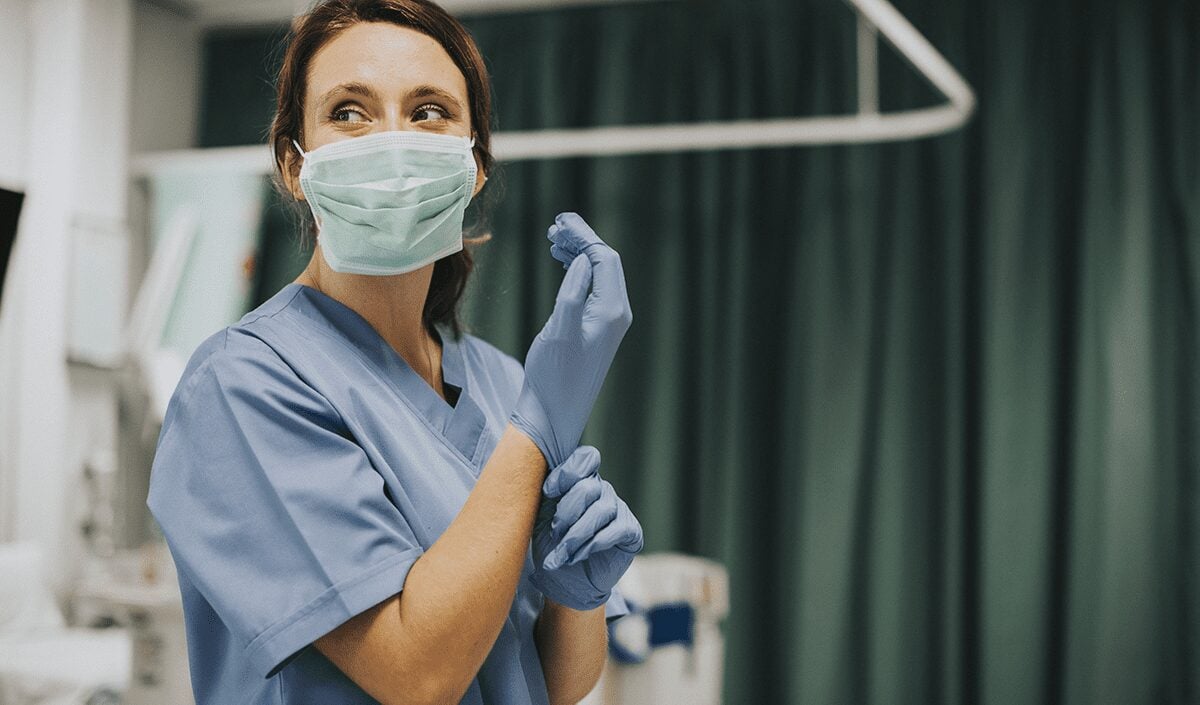With winter quickly approaching and cold/flu season starting back up, there are growing concerns about a resurgence of coronavirus infections (already happening in states like Colorado and Missouri). Healthcare providers are looking for ways to keep staff and patients safe from further COVID-19 spread while maintaining the ability to perform elective surgeries, which provide a crucial amount of revenue to struggling healthcare organizations.
In August, the Association of periOperative Registered Nurses (AORN) released a joint statement with the American College of Surgeons, the American Society of Anesthesiologists, and the American Hospital Association, providing a recommended roadmap to keep healthcare providers in shape for carrying out essential surgeries during the ongoing pandemic.
Top Five Takeaways from AORN’s Roadmap
1. Regional Cooperation
The roadmap involves every institutional player in the healthcare ecosystem, including regional and local public health authorities and healthcare facilities/providers. AORN encourages healthcare providers in the same region to cooperate with one another to share information and resources and “address capacity and new patient needs.” With effective communication and cooperation among facilities and public health authorities, all patients should be able to receive safe, effective treatment without facilities needing to resort to crisis standards of care.
Cooperation between healthcare providers and public health authorities will keep public health authorities informed of how prepared facilities are for an uptick in intensive care demand. This cooperation can also make way for resource-sharing, such as for PPE, ventilators, or other medical supplies.
2. PPE Stockpiles and the Supply Chain
AORN recommends that collaboration extends beyond the local and regional level to the national level, specifically with regard to the medical supply chain. The roadmap encourages institutions and agencies to build stockpiles of PPE, medications, and other supplies during times of low pandemic demand.
Healthcare providers should still be able to obtain their own PPE. AORN does not recommend that all distribution be routed through government agencies, but rather that all stakeholders “work together to ensure vital equipment and medicines are shared according to need.” Responsible stocking over time could prevent overwhelming the supply chain in case of a new surge of infections.
3. COVID-19 Testing Policies for Staff/Patients Leading Up to Surgical Operations
Accurate, timely COVID-19 testing should be used to protect healthcare staff and patients. AORN recommends implementing a clear policy that lays out when and how often staff and patients must be tested in accordance with CDC guidelines.
Testing of surgical patients should be planned in light of their surgical schedule and the accuracy and timeliness of the available tests. Can patients be tested outside of the facility, for example, at a drive-up testing site, or must they be tested on-site? What protocols will the facility follow if a staff member or patient tests positive? Are there systems in place for contact tracing to identify anyone that person may have interacted with in the facility? These are all questions worth considering when laying out a testing policy.
4. Collecting and Paying Attention to Data
Data is a valuable tool for tracking the pandemic and its ongoing effects. AORN recommends that healthcare facilities use COVID-19 data and other clinical information to regularly reevaluate policies and procedures. Relevant data may include:
- COVID-19 numbers, local infection rates, infection-to-hospitalization rates
- Availability of facility beds (ICU and non-ICU), PPE, and ventilators
- Quality-of-care metrics
- The long-term health of COVID-19 patients (do release COVID-19 patients return with other new health problems?)
5. Ongoing COVID-19 Safety and Risk Mitigation Efforts
A safe environment continues to be of utmost importance. Face coverings and social distancing policies should be clearly communicated to staff, patients, and visitors, and consistently enforced. Hand sanitizer should be readily available throughout facilities, and AORN recommends requiring temperature checks of everyone on entry to facilities. These and other risk mitigation efforts (such as those involving facility airflow) should be carried out and adhered to in order to maintain a safe place for surgical operations.
Want to read AORN’s roadmap yourself? Find it here.
Resources:
25+ Powerful FOMO Statistics to Skyrocket Sales (2020). January 3, 2020. https://optinmonster.com/fomo-statistics/
ANSI/AAMI ST79, Comprehensive guide to steam sterilization and sterility assurance in health care facilities. 2017
AST Guidelines for Best Practices for Laundering Scrub Attire. April 14, 2017. https://www.ast.org/uploadedFiles/Main_Site/Content/About_Us/Standard%20Laundering%20Scrub%20Attire.pdf
Laundry and textile hygiene in healthcare and beyond. July 1, 2019. http://microbialcell.com/researcharticles/2019a-bockmuehl-microbial-cell/
Role of healthcare apparel and other healthcare textiles in the transmission of pathogens: a review of the literature. March 31, 2015. https://www.ncbi.nlm.nih.gov/pmc/articles/PMC7132459/
Study of bacterial flora associated with mobile phones of healthcare workers and non-healthcare workers. June 9, 2017. https://www.ncbi.nlm.nih.gov/pmc/articles/PMC5719508/
[1] See https://www.tso3.com/sterizone#resources
[2] Centers for Disease Control and Prevention. https://www.cdc.gov/infectioncontrol/
[3] See guidelines/disinfection/sterilization/other-methods.html#anchor_1554397475
[4] American Lung Association. https://www.lung.org/our-initiatives/healthy-air/outdoor/air-pollution/ozone.html#atrisk
[5] Evan Goulet, PhD, April 2015, Medical Device and Diagnostic Industry. See https://www.mddionline.com/why-manufacturers-should-consider-nitrogen-dioxide-sterilization
[6] PLoS One. 2015 Jun 22. See https://www.ncbi.nlm.nih.gov/pmc/articles/PMC4476675/
[7] New Jersey Department of Health. See https://nj.gov/health/eoh/rtkweb/documents/fs/1376.pdf


